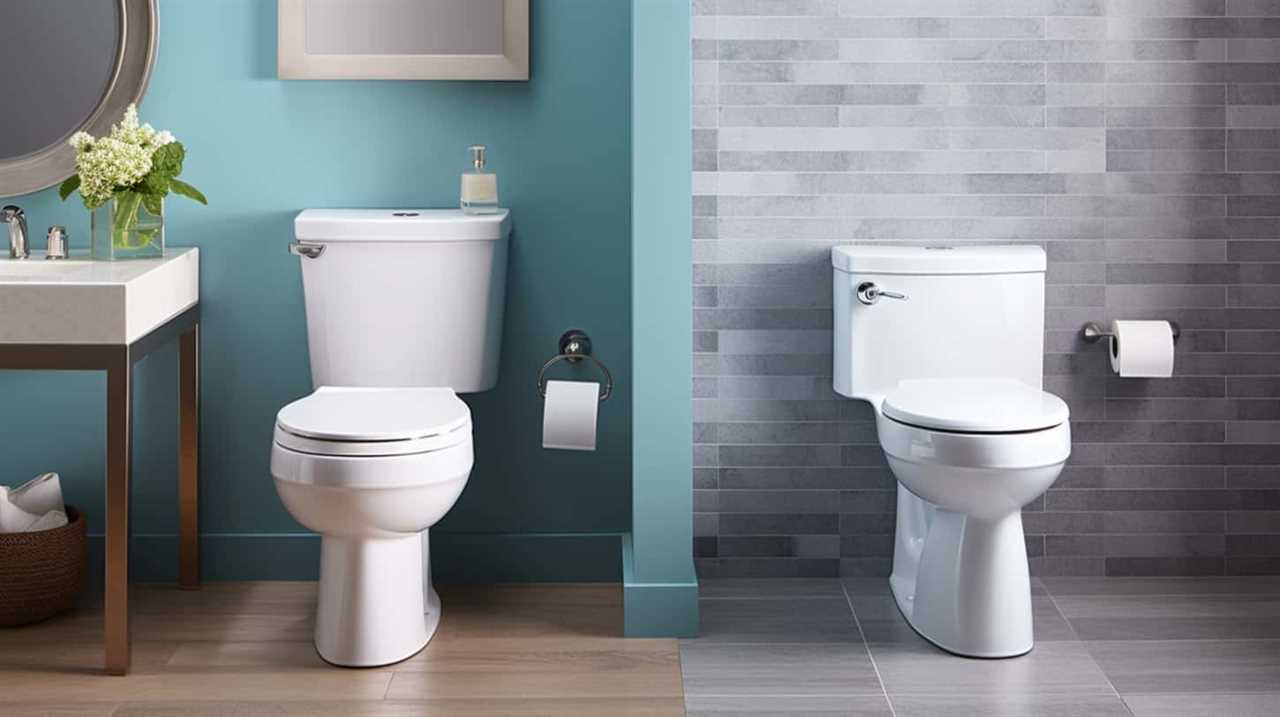When we flush plastic down the toilet, we may not realize the far-reaching consequences of our actions. The environmental impact is significant, as it contributes to water contamination, sewage system damage, and harm to marine life.
In this article, we will explore the effects of flushing plastic and shed light on the potential plumbing issues that arise. It is crucial to understand the negative consequences and take steps towards responsible disposal to ensure the well-being of our planet.
Key Takeaways
- Flushing plastic down the toilet pollutes water bodies and harms aquatic life.
- Plastic waste clogs pipes and sewage systems, leading to costly repairs and disruptions in wastewater management.
- Marine life suffers from entanglement and ingestion of plastic debris, leading to severe consequences for their survival.
- Plastic pollution causes habitat destruction, disrupts marine ecosystems, and releases toxic chemicals into the water, impacting marine organisms and the balance of the ecosystem.
Environmental Impact
Flushing plastic down the toilet can have a detrimental environmental impact on our waterways and ecosystems. Proper waste management is crucial to prevent the long-term consequences it poses.
When plastic is flushed, it enters our sewage systems and can end up in rivers, lakes, and oceans. This not only pollutes the water but also poses significant challenges for waste management. Plastic waste is difficult to remove from water bodies, as it can break down into microplastics, which are small particles that are harmful to aquatic life and can contaminate the food chain. These microplastics can persist in the environment for hundreds of years, causing further damage to ecosystems.

Additionally, plastic waste can clog pipes and sewage systems, leading to costly repairs and inefficient waste disposal. It’s essential to raise awareness about the environmental consequences of flushing plastic and promote responsible waste management practices to protect our waterways and ecosystems.
Plumbing Issues
When plastic is flushed down the toilet, it can cause various plumbing issues that can lead to costly repairs and disruptions in the wastewater management system. One of the common problems is clogged pipes. Plastic items like bottles, wrappers, and bags can get stuck in the pipes, reducing or completely blocking the flow of water. This can result in slow draining or even complete blockage of the toilet. Another issue that can arise is toilet overflow. If the plastic obstructs the pipes and prevents proper water flow, it can cause water to back up and overflow from the toilet bowl. This can not only be messy and inconvenient but also lead to water damage and the need for professional assistance to fix the problem.
| Plumbing Issues | Potential Consequences |
|---|---|
| Clogged pipes | Reduced or blocked water flow |
| Toilet overflow | Water damage and costly repairs |
Water Contamination
Plastic flushed down the toilet can contaminate the water supply, posing serious risks to public health and the environment. Here are some important points to understand about water contamination caused by plastic:
- Groundwater pollution: When plastic enters the water supply, it can seep into groundwater sources, which are commonly used for drinking water. This can lead to the contamination of underground water reserves.
- Health risks: Plastic pollutants in water can release harmful chemicals, such as bisphenol A (BPA) and phthalates, which are known to have adverse effects on human health. These chemicals can disrupt hormonal balance, affect reproductive systems, and even increase the risk of certain cancers.
- Long-lasting impact: Plastic doesn’t easily decompose, so once it enters the water, it can persist for years, continuously releasing toxins. This means that even small amounts of plastic can have long-lasting and far-reaching effects on the environment and human health.
- Bioaccumulation: Marine organisms can mistake plastic for food and ingest it. This leads to bioaccumulation, where the plastic and its associated toxins accumulate in the food chain, ultimately affecting larger animals, including humans, when they consume contaminated seafood.
- Prevention and mitigation: Proper waste management practices, including reducing plastic consumption and recycling, are essential to prevent water contamination and protect public health.
Understanding the impact of plastic on water contamination is crucial for safeguarding our health and the environment. By taking proactive measures to reduce plastic waste, we can mitigate the risks posed by groundwater pollution and protect our precious water resources.

Sewage System Damage
What happens to our sewage system if we flush plastic down the toilet?
Flushing plastic down the toilet can lead to serious damage to our sewage system. One of the main issues is sewer blockage. Plastic materials, especially those that don’t break down easily, can clog the pipes and cause blockages. This can result in sewage backups, overflowing toilets, and even flooding. Not only does this create a health hazard, but it also requires costly repairs and maintenance.
Sewage system damage due to plastic flushing can lead to increased maintenance costs for municipalities and homeowners. These costs can include labor, equipment, and materials needed to clear the blockages and repair the damaged pipes.
The consequences of plastic flushing extend beyond just our sewage system, as it also has detrimental effects on marine life.

Effects on Marine Life
Flushing plastic down the toilet can have detrimental effects on marine life due to the pollution it causes in our waterways. The impact of marine pollution can lead to severe ecosystem disruption.
Here are some ways in which plastic pollution affects marine life:
- Ingestion: Marine animals often mistake plastic debris for food and end up consuming it. This can lead to choking, internal injuries, and even death.
- Entanglement: Animals such as seals, turtles, and seabirds can become entangled in plastic waste, which can hinder their movement, feeding, and breathing.
- Habitat destruction: Plastic pollution can damage coral reefs and other important marine habitats, disrupting the balance of the ecosystem.
- Chemical contamination: Plastics can release toxic chemicals into the water, harming marine organisms and affecting their reproductive capabilities.
- Bioaccumulation: Plastic particles can enter the food chain, with smaller organisms ingesting them and passing them on to larger predators, leading to bioaccumulation of toxins.
It is crucial to address and reduce marine pollution to protect the delicate balance of our oceans and ensure the well-being of marine life.
Frequently Asked Questions
Can Flushing Plastic Down the Toilet Cause Any Health Risks for Humans?
Flushing plastic down the toilet can have significant environmental impacts. It can contribute to plastic pollution in waterways, harming marine life and ecosystems. However, regarding health risks for humans, it would depend on the specific plastic and its potential to contaminate water sources.

What Are Some Alternatives to Flushing Plastic Down the Toilet?
There are numerous eco-friendly alternatives to flushing plastic down the toilet. These options not only help preserve marine life but also minimize the negative impact on our environment. Let’s explore some of these alternatives.
How Long Does It Take for Plastic to Break Down in the Ocean?
Plastic pollution is a serious issue with devastating environmental impacts. When it comes to plastic breaking down in the ocean, it can take hundreds of years, causing harm to marine life and ecosystems.
Can Flushing Plastic Down the Toilet Lead to Blockages in the Sewer System?
Flushing plastic down the toilet can lead to blockages in the sewer system. Although it may seem convenient, it has a potential environmental impact and can have dire consequences for marine life.
Are There Any Regulations or Penalties for Flushing Plastic Down the Toilet?
There may be regulations and penalties for flushing plastic down the toilet. It is important to dispose of plastic properly to avoid damaging the sewer system and polluting the environment.

Conclusion
Flushing plastic down the toilet may seem convenient, but it has dire consequences. Not only does it harm the environment and damage plumbing systems, but it also contaminates water and poses a threat to marine life.
One shocking example is the Great Pacific Garbage Patch, a floating mass of plastic waste twice the size of Texas. Just like a tiny ripple can cause a massive wave, our seemingly harmless actions can create a devastating impact on our planet.
Let’s break this destructive cycle and protect our precious ecosystems.









